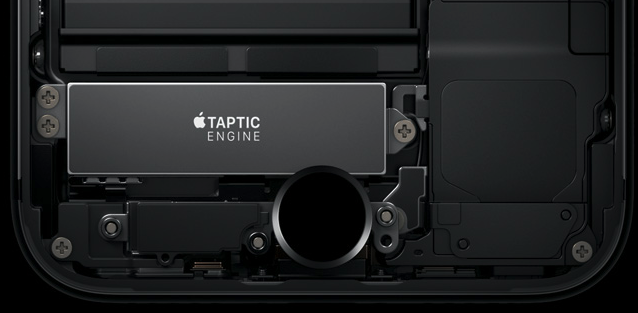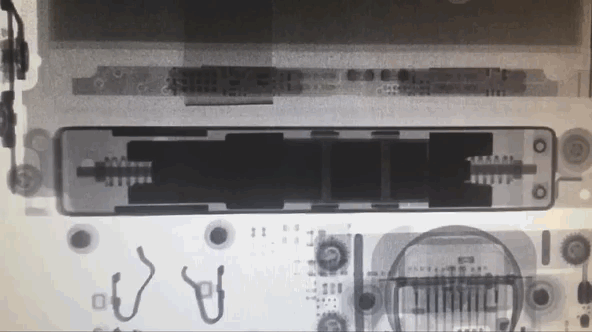
Even if you were paying attention to Phil Schiller during the
iPhone 7 announcement last week, there’s a good chance you missed the news that Apple would be introducing a Taptic Engine API for developers that lets them tap into the new Home button. On the latest iPhone, Apple has removed all mechanical movement from the Home button. Instead of actually traveling when you press it, the button is now solid-state, like the rest of the display. A Taptic Engine provides tactile feedback in the form of a little ‘buzz’ to let you know when the Home button recognizes you’ve pressed it. This developer feature is new to the iPhone (the Taptic Engine has been accessible before, but it was a private API, so Apple would
not authorize apps with
workarounds to use it), but Apple has been using the Taptic Engine in the
Apple Watch and newer MacBooks. In those latter applications, the Taptic Engine responds to Force Touch, which gauges how hard you’re pressing to access secondary menus within apps or icons. For example: with the MacBook, a firm press on a business listing in Maps brings up details such as hours of operation or the address. In a Pages document, the same firm Force Touch yields definitions for words. On Apple Watch, Force Touch is used to bring up menus for actionable items such as deleting or starring emails. It’s also useful for Maps navigation, where a series of buzzes lets you know to turn left or right without ever having to look at the screen (and it's
handy for accessibility features).

Taptic Engine API for iPhone
MacBook and Apple Watch both use the Taptic Engine to give tactile feedback on actions, and are great at doing so. It’s not immediately clear what iOS developers will be able to do with the Taptic Engine API, but there are hints. Starting with
iPhone 6S, Apple introduced
3D Touch, which is essentially an iteration on Force Touch. Its deeper actions are most commonly seen with ‘peek and pop,’ Apple’s designation for the different types of things you’re able to do with 3D Touch. Perhaps the most common peek and pop use case is opening links. If you press down on a link, it opens into a smaller window on-screen. Push your finger down a bit harder, and the link opens up into Safari and a full-screen view. As you press the screen, the Taptic Engine buzzes you to let you know actions are being performed so you know to stop pushing on your display. While it’s a deeper way of interacting with your phone, the Taptic Engine is fairly static. The buzzing you feel—called
haptic feedback—is mostly limited to intervals, like morse code. The Taptic API should take us well beyond that, especially with the Home button. The popular theory is that Apple will let developers manage Taptic Engine intervals, as well as the strength at which it buzzes. A good hypothetical example is a racing game where the Home button serves as the throttle for a race car. As you press down, the Taptic Engine vibration to the Home button gets stronger. Using 3D Touch and the Taptic API, the game understands you’re putting the pedal to the metal (
pun intended) and responds. Similarly, a game that allows the player to earn points or coins may rely on different haptic feedback; an app like Yelp may buzz a certain way when you click on a restaurant you’ve previously visited in the Map view, and differently for one you’ve only viewed. While we still don’t know what Apple will
actually let developers do with the Taptic Engine, it’s reasonable to think it will compliment 3D Touch. Just as a forceful press opens up more options on-screen, the Taptic Engine may let you experience different haptic intensity and duration. And as with 3D Touch, expect much of the experience to be at the developer's discretion, so long as they play within Apple’s guidelines.
 Even if you were paying attention to Phil Schiller during the iPhone 7 announcement last week, there’s a good chance you missed the news that Apple would be introducing a Taptic Engine API for developers that lets them tap into the new Home button. On the latest iPhone, Apple has removed all mechanical movement from the Home button. Instead of actually traveling when you press it, the button is now solid-state, like the rest of the display. A Taptic Engine provides tactile feedback in the form of a little ‘buzz’ to let you know when the Home button recognizes you’ve pressed it. This developer feature is new to the iPhone (the Taptic Engine has been accessible before, but it was a private API, so Apple would not authorize apps with workarounds to use it), but Apple has been using the Taptic Engine in the Apple Watch and newer MacBooks. In those latter applications, the Taptic Engine responds to Force Touch, which gauges how hard you’re pressing to access secondary menus within apps or icons. For example: with the MacBook, a firm press on a business listing in Maps brings up details such as hours of operation or the address. In a Pages document, the same firm Force Touch yields definitions for words. On Apple Watch, Force Touch is used to bring up menus for actionable items such as deleting or starring emails. It’s also useful for Maps navigation, where a series of buzzes lets you know to turn left or right without ever having to look at the screen (and it's handy for accessibility features).
Even if you were paying attention to Phil Schiller during the iPhone 7 announcement last week, there’s a good chance you missed the news that Apple would be introducing a Taptic Engine API for developers that lets them tap into the new Home button. On the latest iPhone, Apple has removed all mechanical movement from the Home button. Instead of actually traveling when you press it, the button is now solid-state, like the rest of the display. A Taptic Engine provides tactile feedback in the form of a little ‘buzz’ to let you know when the Home button recognizes you’ve pressed it. This developer feature is new to the iPhone (the Taptic Engine has been accessible before, but it was a private API, so Apple would not authorize apps with workarounds to use it), but Apple has been using the Taptic Engine in the Apple Watch and newer MacBooks. In those latter applications, the Taptic Engine responds to Force Touch, which gauges how hard you’re pressing to access secondary menus within apps or icons. For example: with the MacBook, a firm press on a business listing in Maps brings up details such as hours of operation or the address. In a Pages document, the same firm Force Touch yields definitions for words. On Apple Watch, Force Touch is used to bring up menus for actionable items such as deleting or starring emails. It’s also useful for Maps navigation, where a series of buzzes lets you know to turn left or right without ever having to look at the screen (and it's handy for accessibility features). 



